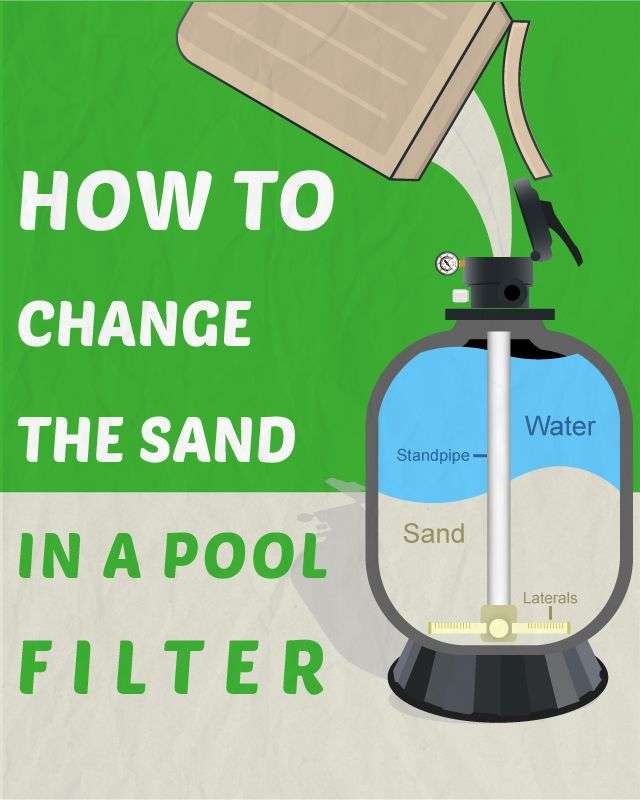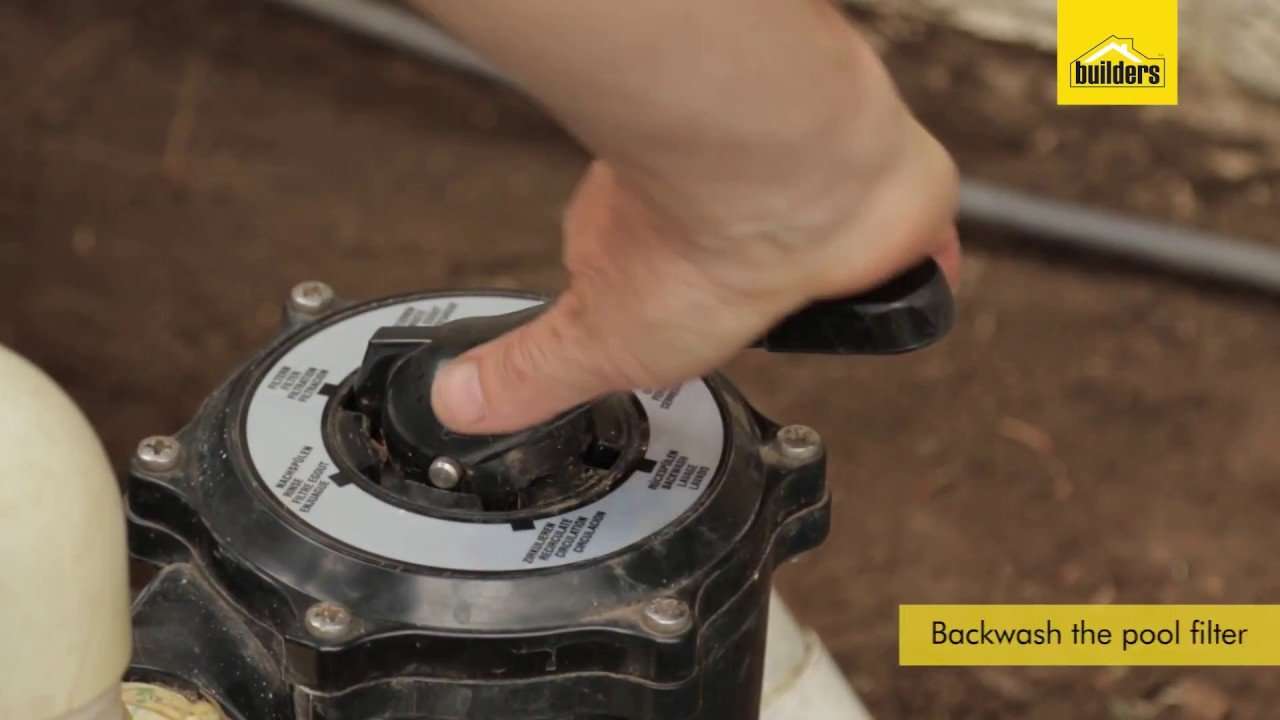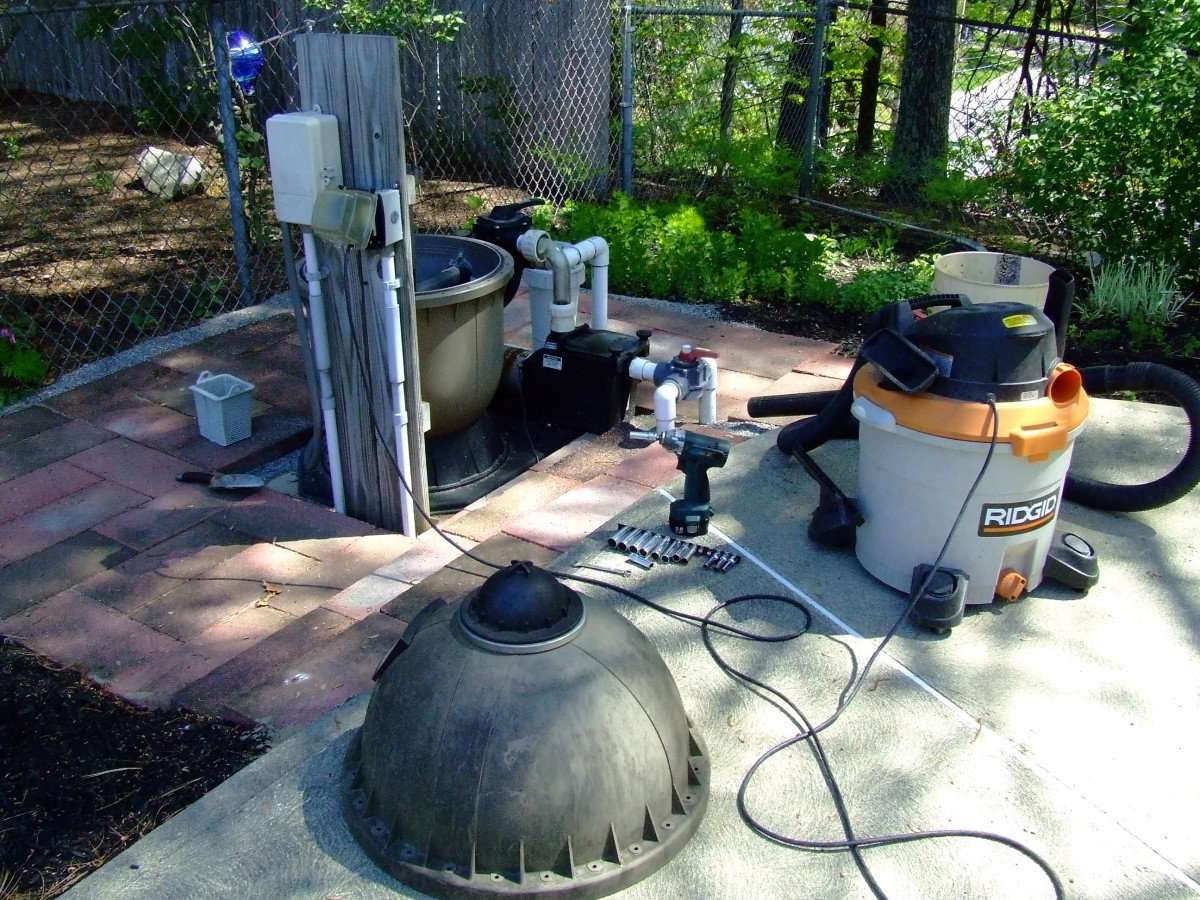The Advantages Of Filter Balls
- Much lighter and easier to handle than heavy wet sand.
- Easy to fill and empty the filter tank.
- Easy to dispose of in the garbage.
- Filter balls can be cleaned and recycled. Wash them in the washing machine.
- Captures finer particles than sand leaving the water crystal clear.
- Filter operates at lower pressure as water can more easily move through the filter balls than through sand.
- The pressure gauge remains low for longer resulting in less requirement to backwash the filter.
- Reduces water usage with less backwashing.
- Results in higher flow rate with strong water pressure stream at the return jets.
- Better water circulation around the pool.
- Vacuum suction pressure is strong.
- Less strain on the pump motor resulting in less filter and pump noise.
- Less strain on the whole filtration system.
- Operate the filter less hours resulting in electricity savings.
- Much less likely to have a broken standpipe and laterals with filter balls as they are not heavy and dense like sand.
- Easier to prepare your filter for winter. Water drains from the tank quickly and its easy to remove the filter balls. No more damp sand freezing and expanding in the filter tank causing damage.
- Easy to purchase online and have delivered as there is no weight.
- Filter balls cost less than bags of sand.
More About Pool Maintenance
- Closing an Inground Swimming Pool? How to Winterize …After reading this article and viewing all the pictures, you will know more than your pool company does about closing your inground pool. I will walk you through the steps of closing an inground swimming pool, how to drain the filter, how to drain th
This article is accurate and true to the best of the authorâs knowledge. Content is for informational or entertainment purposes only and does not substitute for personal counsel or professional advice in business, financial, legal, or technical matters.
Turn Off The Pump And Drain The Filter
Turn off the filter and pump. Be sure the timer isnt set to turn on soon, so the pump wont kick on while everything is disconnected. If the pumps kicks on while dry, it may burn out.
Remove the drain plug from the bottom of the filter tank, and let all the water drain out.
Tip: Draining the filter tank may take a while, so you could do this step in the morning, then come back in the cooler evening air to finish the rest.
Read Also: How To Patch An Above Ground Pool
Doheny’s Lowest Price Guarantee
Shop with confidence at Doheny’s.
Our volume discounts guarantee the absolute lowest prices on all of our products: swimming pool supplies, chemicals, equipment and more. To prove it, if you find a lower total delivered price by a licensed and authorized pool supply catalog or website , we will refund you the difference. We will even guarantee our Low Price for 30 days after your purchase. Simply contact our Customer Care Team at: or call us at 1-800-574-7665 to report the lower price. After verification, the difference will be promptly refunded. Doheny’s is not responsible for inadvertent price or text misprints or errors. Some restrictions apply – call for details.
What Is Filter Sand

Just like how fish tanks have their filtration systems, pools have theirs as well. Instead of a mechanical filter that runs at all times, pools use sand. Yes, thats right, sand.
A pool filter keeps the water clean by trapping the gross things that find their way there. Things like algae, dirt, bacteria, and every dead bug youve ever seen floating around. The filters do this with the help of filter media.
Filter media is the material used to actually grab and trap the gross things in the pool. The filter media pools use is sand.
Recommended Reading: Can You Make Your Own Inground Pool
Evacuate Water From The Sand Filter Tank
First, turn off power to the pump motor. As a safety precaution, flip the switch at the breaker panel to prevent unintended operation while youre working on the filter. Next, open the air relief valve on the filter to release pressure in the system, allowing most of the water inside the filter tank to return to the pool. Finish up by removing the drain plug cap, located at the bottom of the sand filter tank, to empty the remaining water and .
Signs Your Filter Is On The Fritz
If you choose not to change sand just in case or you think something is wrong with your filtration system, make sure to look out for signs your filter is going bad.
Some common filter issues include:
- Broken Laterals
- Cloudy water as a result of a slow sand filter
- Dirty sand filter even after backwashing
- Leaking multiport valves
- Tank failure
- Valve failure
If youre noticing any of these problems with your sand filter, it is in your best interest to change the sand. If the change of sand doesnt help and youre still seeing these issues arise, then its time you get a new filter altogether.
Also Check: Mandalay Bay Pool Season
Sand Can Leak In The Pool
We saved the best reason for last. If youre not yet dissuaded from changing pool sand too often, keep in mind that it can leak in places beyond your shoes and your pool deck. The sand can also get in the pool itself.
Its usually caused by broken laterals or a broken standpipe. As mentioned, these parts are easy to damage and you may not even notice youve damaged them until you turn the filter back on which would be very annoying!
Sand is supposed to be in the ocean, not your swimming pool! Now you have to get it out before it can scratch up the liner and cause other damage. Removal will entail moving the sand with your pool brush and then using your multiport filter to suck up the sand.
When To Change The Pool Filter Sand
Once the pool filter sand has begun to lose its contaminant holding ability its time to replace the sand. Otherwise, your pool water will gradually become dirty.
Backwashing the sand will no longer enhance its cleaning capacity.
You will find that you need to run the filter for longer and add more chemicals to keep the pool clean.
I recommend to change your pool filter sand every 3 to 5 years.
Read Also: Unclogging Pool Skimmer Line
How Do I Know If My Sand Filter Is Bad
There are a few key ways to tell if your sand filter is bad. One way is to check the pressure gauge if the pressure is low, that could be a sign that the filter is clogged. Another way to tell is to look at the water clarity if the water is cloudy, that could be a sign that the filter needs to be cleaned.
Risks Of Changing Your Pool Filter Sand Too Often
Depending on your cleaning schedule and environment, the sand in your pool filter will need to change every 3 to 5 years. It is important to note that changing the sand too often has some consequences.
There is a sweet spot for how old you want your sand to be. And it turns out sand filters reach peak productivity after a couple of years of use. As the contaminants build in the sand, they create extra barriers that help trap new debris. So when you change your sand too early, you skip this stage altogether and start fresh when the sand is less productive.
Another risk you face if you change your sand more than necessary is breaking filter components. If you are not extremely careful when changing the sand, you could damage the standpipe, multiport valve, or laterals.
The more you change the sand, the more your filter will be subject to wear and tear. Keeping the wear and tear as minimal as possible will ensure a longer life for your equipment.
Additionally, when parts of the filter break, especially the laterals or standpipe, it is common to notice sand leaking into the pool. Sand in your pool can be an annoying problem that takes time to fix. It must be removed as the sharp edges of the sand can damage the pool liner.
You May Like: Can I Leave My Dolphin Pool Cleaner In The Pool
Get The Right Equipment
Be sure you have everything you need on hand before you begin the process. Your list of essentials can include sand, a replacement O-ring between the valve and the tank, Teflon tape, lubricant, and unions.
Only use pool filter sand that is approved by your manufacturer. If you have any questions about what kind of sand you need, check with your local pool retailer.
Pro tip: Your pool filter has many small yet important components. Always place items like your filter drain cap in a safe, memorable place so you can find them easily during reassembly.
Thanks For The Excellent Service

Just a few words of thanks for the excellent service we received from your company. We were most impressed by the utterly professional and efficient manner the project was undertaken. Your whole team was always friendly and so accommodating. We would gladly recommend you to anyone desiring peace of mind when major renovations or a new pool are required. We are extremely happy with our new pool and paving!
Thank you for building our swimming pool!
Robust Pools and the Staff were Fantastic!Thank you to Bruce and his Team!
Also Check: Swimming With Lice
How To Fix A Broken Standpipe Or Laterals
The part that tends to fail the most is the laterals but its common sense to replace both the standpipe and laterals as they are connected and work together. Usually, they are sold as one unit for most brands of filter.
It is not possible to find out what part is broken and needs replacement until you empty the sand from the filter tank.
Note: Please ensure you order a new standpipe and laterals before you empty your sand filter. Otherwise, you cannot repair the filter immediately.
Once you open the sand filter you can no longer filter your pool water. And the longer your filter is out of action the more likely your pool water will become contaminated and turn green.
These parts are lightweight plastic components that can be delivered to your home. The most convenient way to purchase the parts is to order online.
After replacing the faulty parts, you can reassemble your filter and turn it on again.
Replacing the standpipe and laterals is a simple process.
First, you need to follow the procedure for emptying your sand filter and replacing the sand.
Please refer to our article on How to Change Pool Filter Sand
While the filter tank is empty you can easily replace the standpipe and laterals. The fitting simply attaches into the bottom of the multiport valve.
How To Change The Sand In A Pool Filter
Learning how to change the sand in a pool filter can be an easy task but also slightly daunting since it is only recommended to change your sand every 3 years.
A sand filter is unique in design because as the sand ages, it can actually become more effective at trapping and filtering the debris and bacteria commonly found in above ground pools.
For this reason, it is better to follow the manufacturers recommendations and only change the sand if you are having issues with effectiveness or that 3-year mark has come and gone.
Don’t Miss: How To Heat Up An Above Ground Pool
Now You Are Ready To Replace The Sand
It is very important that you start the system in backwash mode. This will flush out the dust from the sand and also allow the sand to settle completely around the laterals after backwashing. See Plastica Back Wash Hose
Which Types Of Sand Can You Use In Your Pool
Just because we refer to it as a sand filter, does not mean that you can pick up a bucket of sand from the beach and use it as a replacement. There are three types of sand that are used, and we are here to give you a brief overview of all of them. The next time you make your purchase for pool sand filters, consider the following types to help with your decision!
Read Also: Pool Water Chemical Calculator
What Are Pool Filter Sands For
Sand filters are one of the most popular and common options for keeping swimming pools safe and healthy. This type of filter utilises sand as its filtering agent, and it does so by trapping debris when it passes through so that it is only clean and filtered water that flows through your pool. The sand filters do not have any fibre or paper parts that easily tear or clog, so sand filters have a great chance of lasting longer since they do not require much maintenance and repair.
Pool sand filters work by allowing water to cycle through a container that has sand in it. The water flows through without much trouble, but larger particles such as pool dirt will be trapped. Once these said dirt and debris are collected, it is only clean and safe water that flows back out to your swimming pool.
Here is the interesting thing about these sand filters: they become more efficient and effective with use! As the filter collects more particles and debris the filter collects particles and debris passing through the sand filter. This is another fringe advantage of a sand filter that makes this such an efficient and reliable piece of equipment for your swimming pool.
Why Should You Change The Sand
The reason why sand pool filters work is largely due to its roughness. It is due to its coarseness that it is able to effectively filter the particles of dirt in pool water. However, the rushing of water has a tendency to wear out and smoothen the surface of the sand.
Weathering is the process by which these sand particles are smoothed out. Once pool filter sand is weathered to a smooth surface, it takes away its jagged edges that has the power to filter out contaminants. Thus, this is when it needs to be replaced.
Also Check: Hide Pool Equipment Fence
Reassemble The Sand Filter Housing
Once the sand is back in the housing, it’s time to reinstall the housing top.
Very important note: Remove the rubber gasket or o-ring, inspect it for damage, cracking, or splitting, if there are any signs of damage, replace it! If it looks good and you’re confident it won’t leak, use a little silicone paste and lube the rubber o-ring or gasket. This will help keep the seal pliable and will help keep it in place during the installation process.
Clean the mating surfaces, be sure to remove all the sand from the areas where the gasket sits, if there is any sand under or on the gasket, you will have a leak, so make sure you remove every tiny spec of sand, you don’t want to do this again, do you? Once you cleaned the mating surfaces and the gasket is back in place, and the top is on the housing, reinstall all the bolts, washers, and nuts, snug each one down but do not tighten them completely.
Using two wrenches, tighten each nut a quarter turn, move on to the next one until you have tightened each one a quarter turn, now continue going around the perimeter of the housing to each bolt and making a quarter turn until they are tight, this will ensure that the gasket has even pressure and you won’t squeeze or pinch the gasket causing a leak. You may have to tighten each bolt at least four times, but just keep tightening them till there snug, don’t over-tighten them or you will cause a leak as well.
Backwash first before circulating the water back into the pool.
Eddie Carrara
Replace The Standpipe And Laterals

If you have noticed sand at the bottom of your pool which has been blown in from the filter then you most likely have faulty laterals. Sand is leaking into the laterals and being washed back to the pool.
Please read our article on Why Do I Have Sand in My Pool?
Replacing the standpipe and laterals is very easy now that the tank is empty. Simply insert the new fitting into the tank. Some models have fold down laterals, others have screw on laterals. If the laterals screw on you will need to do this inside the tank. Unless you have a tank that opens in the middle which makes everything much easier.
I recommend replacing the standpipe and laterals every second time you change your sand as these parts frequently wear down and leak.
Don’t Miss: Build A Inground Pool
How To Replace Sand In A Pool Filter
